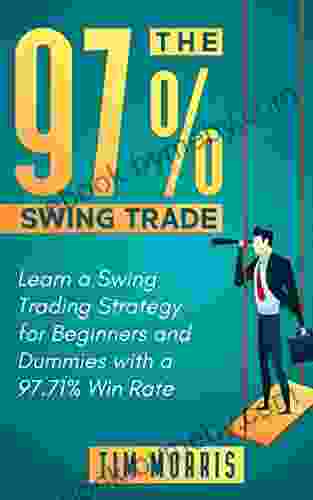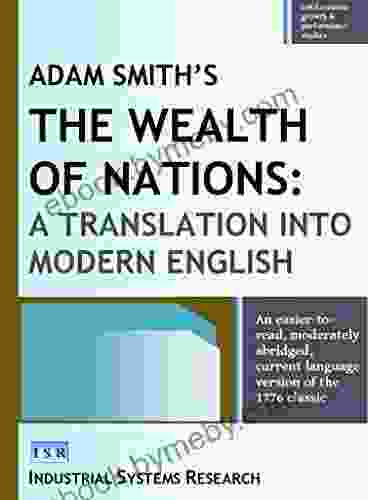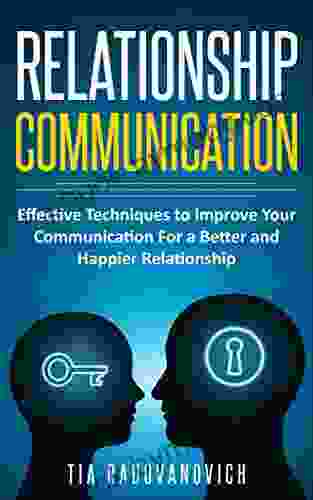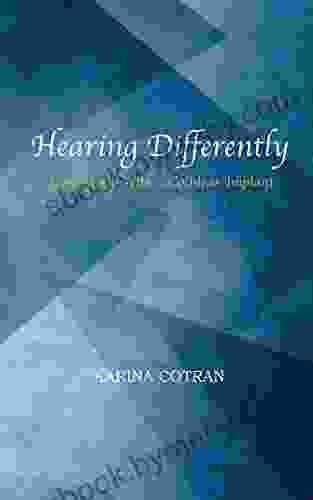All You Need to Know About Exchange Traded Funds: The Ultimate Guide

Exchange Traded Funds (ETFs) are a popular investment vehicle that offer many advantages over traditional mutual funds. ETFs are traded on stock exchanges, just like stocks, but they offer the diversification of a mutual fund. This makes them a great choice for investors who want the benefits of both stocks and mutual funds.
In this article, we will provide you with everything you need to know about ETFs, including:
- What are ETFs?
- How do ETFs work?
- What are the advantages and disadvantages of ETFs?
- How to choose the right ETF for your needs
ETFs are investment funds that track a specific index, sector, or asset class. They are traded on stock exchanges, just like stocks, but they offer the diversification of a mutual fund. This means that ETFs provide investors with the potential for growth and income, while also reducing their risk.
4.3 out of 5
| Language | : | English |
| File size | : | 4044 KB |
| Text-to-Speech | : | Enabled |
| Screen Reader | : | Supported |
| Word Wise | : | Enabled |
| Print length | : | 416 pages |
| Lending | : | Enabled |
ETFs are created by investment companies, such as Vanguard, BlackRock, and State Street Global Advisors. These companies create ETFs that track a variety of different indexes, sectors, and asset classes. For example, there are ETFs that track the S&P 500 index, the Nasdaq 100 index, the Dow Jones Industrial Average, and the Russell 2000 index. There are also ETFs that track specific sectors, such as technology, healthcare, and financials. And there are even ETFs that track specific asset classes, such as bonds, commodities, and real estate.
ETFs work by pooling money from investors and investing that money in a portfolio of stocks, bonds, or other assets. The portfolio is designed to track a specific index, sector, or asset class. The ETF manager will buy and sell stocks, bonds, or other assets in the portfolio to ensure that the ETF's performance matches the performance of the underlying index, sector, or asset class.
ETFs are traded on stock exchanges, just like stocks. This means that investors can buy and sell ETFs throughout the trading day. The price of an ETF will fluctuate throughout the day, based on the supply and demand for the ETF.
ETFs offer a number of advantages over traditional mutual funds, including:
- Lower costs: ETFs typically have lower expense ratios than mutual funds. This means that more of your investment will go towards growing your wealth, rather than paying fees.
- Greater transparency: ETFs are traded on stock exchanges, which means that their prices are constantly updated and available to the public. This makes it easy for investors to track the performance of their ETFs and make informed investment decisions.
- Tax efficiency: ETFs are tax efficient, which means that they can help investors reduce their tax liability. This is because ETFs are not subject to the same capital gains taxes as mutual funds.
- Diversification: ETFs provide investors with the potential for diversification, which can help to reduce their risk. This is because ETFs track a variety of different indexes, sectors, and asset classes.
However, ETFs also have some disadvantages, including:
- Limited investment options: ETFs are only available for a limited number of indexes, sectors, and asset classes. This means that investors may not be able to find an ETF that meets their specific investment needs.
- Trading costs: ETFs are traded on stock exchanges, which means that investors may have to pay trading commissions. This can add to the cost of investing in ETFs.
- Volatility: ETFs can be volatile, which means that their prices can fluctuate significantly over time. This can make it difficult for investors to predict the performance of their ETFs.
When choosing an ETF, it is important to consider your investment goals, risk tolerance, and time horizon. You should also consider the following factors:
- The underlying index, sector, or asset class: What is the ETF tracking? This will determine the risk and return potential of the ETF.
- The expense ratio: How much does the ETF cost? This will eat into your returns over time.
- The liquidity: How easy is it to buy and sell the ETF? This will affect your ability to get in and out of the ETF when you need to.
- The track record: How has the ETF performed in the past? This will give you an idea of what to expect in the future.
Once you have considered all of these factors, you can start to narrow down your choices and choose the right ETF for your needs.
ETFs are a popular investment vehicle that offer many advantages over traditional mutual funds. They are lower cost, more transparent, tax efficient,
4.3 out of 5
| Language | : | English |
| File size | : | 4044 KB |
| Text-to-Speech | : | Enabled |
| Screen Reader | : | Supported |
| Word Wise | : | Enabled |
| Print length | : | 416 pages |
| Lending | : | Enabled |
Do you want to contribute by writing guest posts on this blog?
Please contact us and send us a resume of previous articles that you have written.
 Book
Book Novel
Novel Page
Page Chapter
Chapter Text
Text Story
Story Genre
Genre Reader
Reader Library
Library Paperback
Paperback E-book
E-book Magazine
Magazine Newspaper
Newspaper Paragraph
Paragraph Sentence
Sentence Bookmark
Bookmark Shelf
Shelf Glossary
Glossary Bibliography
Bibliography Foreword
Foreword Preface
Preface Synopsis
Synopsis Annotation
Annotation Footnote
Footnote Manuscript
Manuscript Scroll
Scroll Codex
Codex Tome
Tome Bestseller
Bestseller Classics
Classics Library card
Library card Narrative
Narrative Biography
Biography Autobiography
Autobiography Memoir
Memoir Reference
Reference Encyclopedia
Encyclopedia Kat Howard
Kat Howard Kara Goldin
Kara Goldin Mecyll Gaspary
Mecyll Gaspary Monica Hughes
Monica Hughes Sally Pomme Clayton
Sally Pomme Clayton Karen Armstrong
Karen Armstrong Katerina Griffith
Katerina Griffith Juliet Defore
Juliet Defore Paula Williams Madison
Paula Williams Madison Margaret L Lial
Margaret L Lial Kathryn Leigh Scott
Kathryn Leigh Scott Sayantani Dasgupta
Sayantani Dasgupta Kathryn Lukas
Kathryn Lukas Robert C Blattberg
Robert C Blattberg Kathryn Mcmaster
Kathryn Mcmaster Sasha Duerr
Sasha Duerr Kathryn Wolfe
Kathryn Wolfe Kassanna
Kassanna Kelly Dorfman
Kelly Dorfman Kate Ludeman
Kate Ludeman
Light bulbAdvertise smarter! Our strategic ad space ensures maximum exposure. Reserve your spot today!

 Sam CarterMaster Swing Trading: A Comprehensive Guide for Beginners and Dummies with an...
Sam CarterMaster Swing Trading: A Comprehensive Guide for Beginners and Dummies with an...
 Desmond FosterWhere Is Chichen Itza: Unraveling the Enigmatic Heart of Mayan Civilization
Desmond FosterWhere Is Chichen Itza: Unraveling the Enigmatic Heart of Mayan Civilization Drew BellFollow ·2.1k
Drew BellFollow ·2.1k Michael ChabonFollow ·2.6k
Michael ChabonFollow ·2.6k Allan JamesFollow ·2.2k
Allan JamesFollow ·2.2k Salman RushdieFollow ·14.2k
Salman RushdieFollow ·14.2k Christian BarnesFollow ·16.8k
Christian BarnesFollow ·16.8k Alvin BellFollow ·18.4k
Alvin BellFollow ·18.4k Roy BellFollow ·3k
Roy BellFollow ·3k Chad PriceFollow ·19.4k
Chad PriceFollow ·19.4k

 George Orwell
George OrwellPandemic with Dogs: Two Essays
By Susannah Charleson In the midst of...

 Leo Mitchell
Leo MitchellAdam Smith's The Wealth of Nations: A Classic Treatise on...
Adam Smith's The...

 Cade Simmons
Cade SimmonsUnlock Your Communication Potential: Effective Techniques...
Communication is a fundamental...

 Floyd Richardson
Floyd RichardsonFire and Ashes: Success and Failure in Politics
Fire and Ashes: Success and...

 Oliver Foster
Oliver FosterUnlock the Enchanting Mystery of Ken Follett's "The Key...
Embark on a captivating literary journey into...
4.3 out of 5
| Language | : | English |
| File size | : | 4044 KB |
| Text-to-Speech | : | Enabled |
| Screen Reader | : | Supported |
| Word Wise | : | Enabled |
| Print length | : | 416 pages |
| Lending | : | Enabled |










